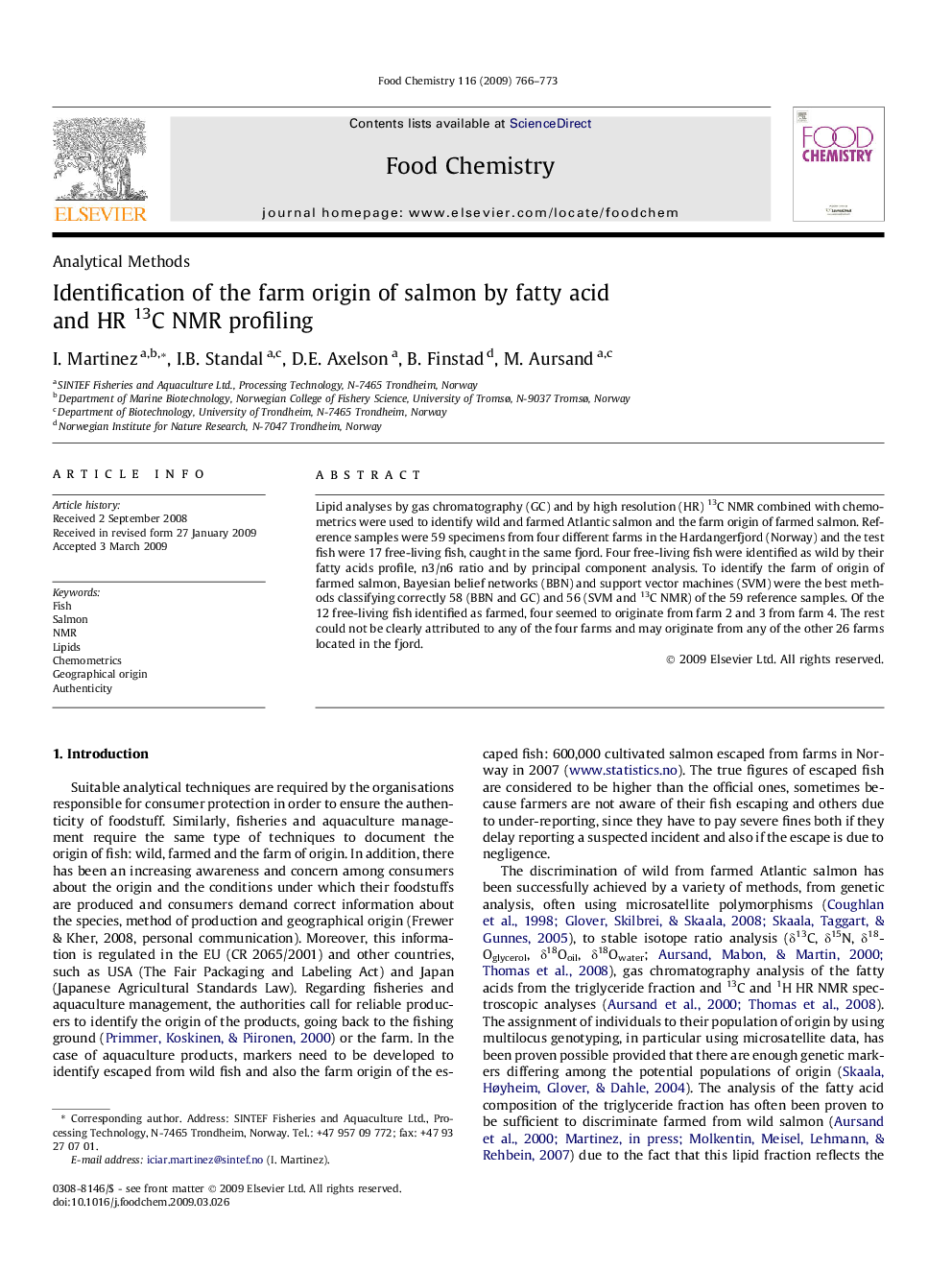| Article ID | Journal | Published Year | Pages | File Type |
|---|---|---|---|---|
| 1185960 | Food Chemistry | 2009 | 8 Pages |
Lipid analyses by gas chromatography (GC) and by high resolution (HR) 13C NMR combined with chemometrics were used to identify wild and farmed Atlantic salmon and the farm origin of farmed salmon. Reference samples were 59 specimens from four different farms in the Hardangerfjord (Norway) and the test fish were 17 free-living fish, caught in the same fjord. Four free-living fish were identified as wild by their fatty acids profile, n3/n6 ratio and by principal component analysis. To identify the farm of origin of farmed salmon, Bayesian belief networks (BBN) and support vector machines (SVM) were the best methods classifying correctly 58 (BBN and GC) and 56 (SVM and 13C NMR) of the 59 reference samples. Of the 12 free-living fish identified as farmed, four seemed to originate from farm 2 and 3 from farm 4. The rest could not be clearly attributed to any of the four farms and may originate from any of the other 26 farms located in the fjord.
